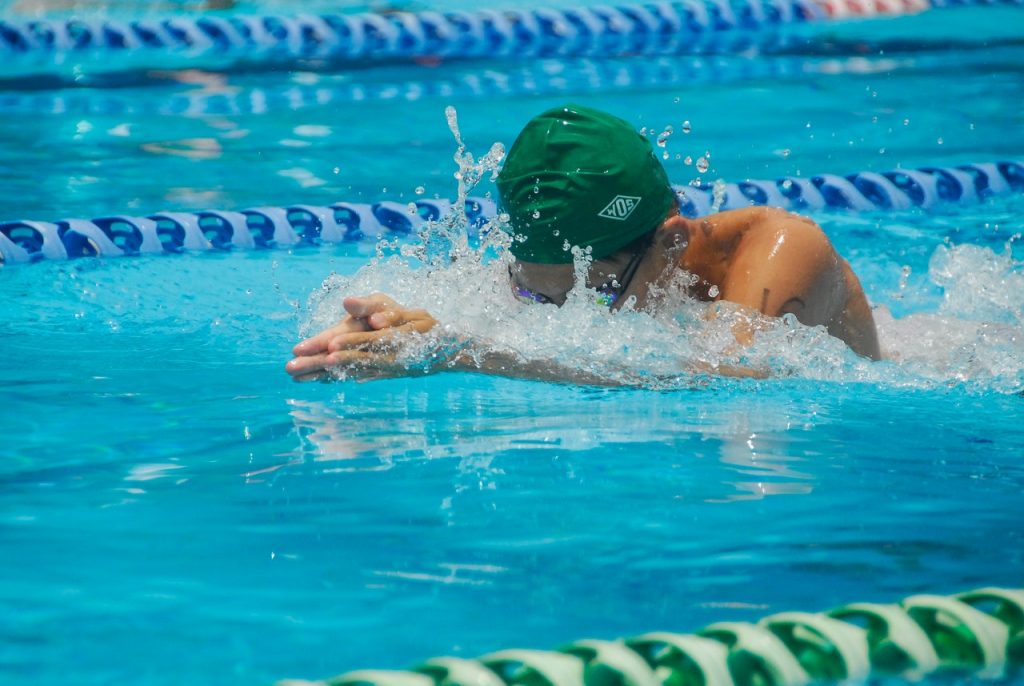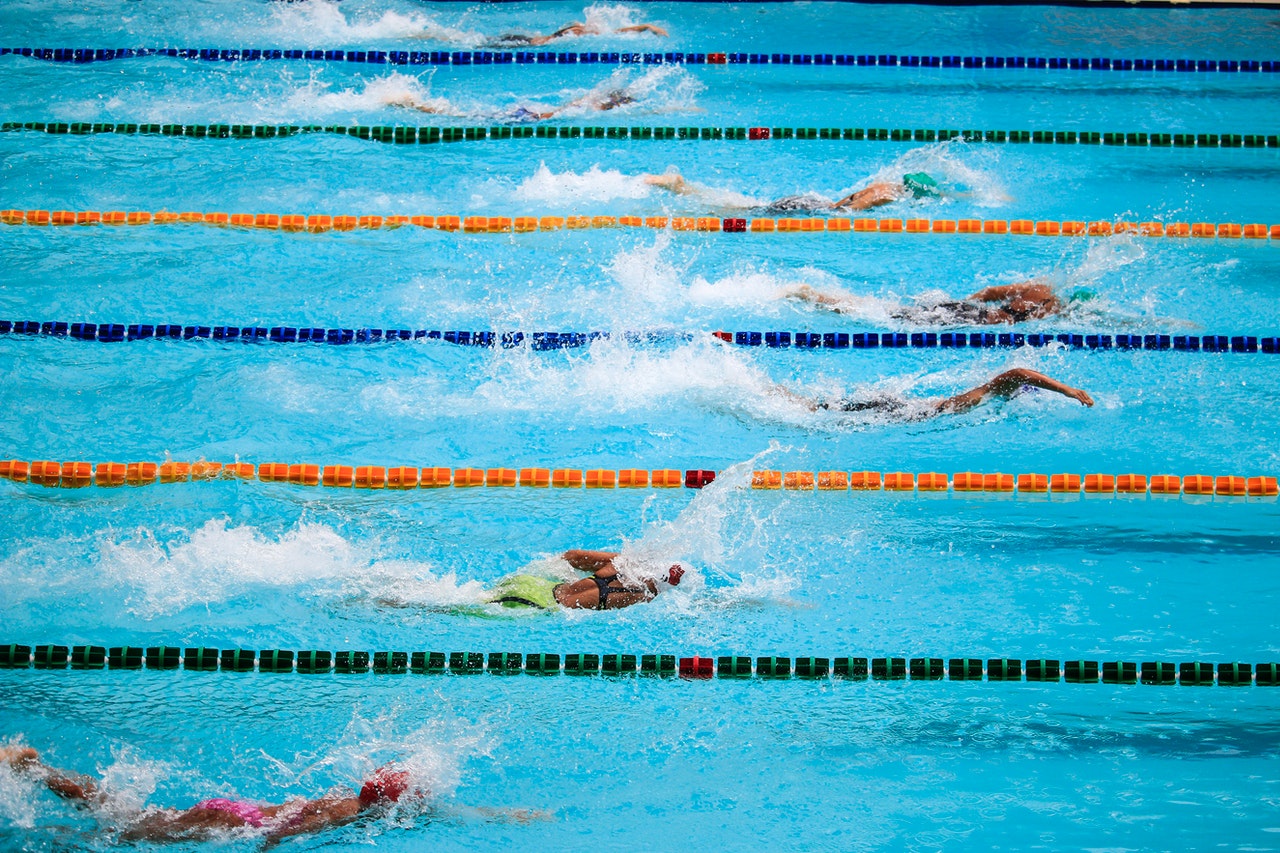Adult Swimming Beginners

The benefits of learning to swim are numerous and diverse, ranging from simple recreational enjoyment to vigorous and efficient workout. However, the Amateur Swimming Association (ASA) found that about one in five adults lack swimming skills. Take solace in the knowledge that you are not alone if you are learning for the first time or simply wish to enhance your in-water skills.
We ask Freedom Leisure’s aquatic business manager, Alyson Zell, how adults may learn to swim (or brush up on their skills):
Can I still learn to swim?
When learning to swim for the first time, adults aren’t quite as carefree as kids are, but it’s never too late to start, and swimming may improve your life in a variety of ways no matter your age.
Even though adults aren’t quite as carefree as kids while learning to swim, it’s never too late to start.
Swimjourney Adults who opt to take swimming lessons typically do so for a good cause, such as to join their swimming-capable children on vacation or to partake in activities like sailing that require swimming proficiency.
“This suggests they have a better chance of succeeding.” Anyone may learn to swim; the process varies from person to person. You are missing out on a fantastic method to stay fit and healthy if you cannot swim.
 The advantages of swimming instruction
The advantages of swimming instruction
Swimming will not only make you feel wonderful emotionally but also help you look amazing physically. Spending just 30 minutes in the pool three times a week can greatly minimize your risk of developing anxiety or depression, enhance your sleep habits, and reduce your stress levels.
Swimming helps maintain a healthy weight, a healthy heart, and healthy lungs while enhancing muscular strength, endurance, and cardiovascular fitness.
Therefore, it’s time to don your safety gear and jump right in. However, before you leave, keep in mind these advice to get the most of your time in the pool:
Prior to entering the pool
Before moving on to the pool, try to develop your water confidence in the bathroom. This will help you stay calm under water.
It will be simpler for you to learn if you are more at ease, according to Zell. ‘I know it’s easier said than done, but try practicing gently exhaling while immersing your face. This is a crucial swimming technique. While on dry land, you can complete this task at home in the bathtub, shower, or sink.
Practice deep breathing.
Make sure you have a firm grasp on breathing before diving into the deep end because it is such a crucial component of swimming. Get acclimated to the idea of maintaining controlled, even breathing while your body is concentrating on something else.
Try using controlled breathing while you’re walking, running, or even just doing something as basic as cooking or ironing. You will learn breathing methods from your swim instructor so that you can relax and enjoy the water.
Purchase the appropriate swimming equipment.
The appropriate equipment can improve your swimming and make the whole activity more enjoyable. Zell advises choosing swimwear that won’t restrict movement and that long hair should be pulled back or covered with a pool hat. “Goggles can also be effective to help the student immerse,” says the author.
There are a few other lesser-known swimming accoutrements available that you may find helpful on your journey to swimming success.
You can avoid ear infections and sinus problems using earplugs and nose clips.
Using earplugs and nose clips, you can avoid getting water in uncomfortable spots and causing discomfort. They can also help prevent you from getting ear infections and sinus problems, which would both prevent you from swimming, and nobody wants that!
Kickboards and hand paddles are useful tools for developing arm and leg strength as well as for providing flotation while you’re still getting the hang of the whole procedure. If you have a teacher, don’t go out and buy things before your classes because they will probably offer them or give you advice on what to buy for yourself.
Add practice time for swimming.
Swimming is one of those sports where practicing technique truly pays off. No matter how many lengths you perform each day, your body won’t profit from them unless you have a firm grasp of the fundamentals. Doggy paddle may be simple, but it doesn’t exactly exude sophistication and effectiveness. Zell emphasizes the advantages of streamlining as a way to start developing style and quickness.
According to Zell, position in the water is essential to generating the proper body position to reduce resistance and aid buoyancy. Use floats, buoyancy aids, or a partner’s support to practice gliding while learning how to get back to your feet. Once you start, it’s crucial to learn how to stop.
Develop your skills
Choose the stroke that suits you the best, then work to make it even better.
According to Zell, there is no right or wrong stroke to begin with; it all depends on the learner’s innate talent. Adult learners may prefer a breast stroke leg action since they frequently find it difficult to do an up-and-down flutter kick.
 Tips for swimming the front crawl
Tips for swimming the front crawl
Keep your stomach flat, head in line with your body, and eyes front and down when doing the front crawl (also known as freestyle).
On each individual stroke, make sure your hands enter the water palm first and maintain your fingers closed to increase speed.
One at a time, thrust your arms up and over your head while bringing them back to your body in the shape of an hourglass.
Tips for swimming the breaststroke
Your legs and arms should be moving at the same time in a powerful and steady rhythm when performing the breaststroke.
Your head should lift so that your chin rests on the surface of the water while your hands extend out in front of you and then back towards your chest.
Your feet should be facing out as you raise your legs toward your bottom, then kick back down to go forward like a frog.
Between sets, take a break and rehydrate.
Swimming is an exhausting sport, just like any other. Given that water is over 800 times denser than air, it is not surprising if you tire out more quickly while exercising in it than you do while doing other types of exercise.
As a result, be careful to understand how to build up your strength while submerged. Zell offers floating as a relaxing activity for a break. Because you can maintain your face out of the water while floating on your back, she claims that this posture is the easiest to perfect. This is an excellent safety measure if you grow exhausted or feel out of your depth.
To relieve your thirst and enable you to stay active longer, make sure you have a water bottle beside the poolside.
It could seem strange to take a drink when surrounded by water. While exercising, your body will still need to stay hydrated, so have a water bottle by the poolside to relieve your thirst and enable you to exercise longer.
Remember to cool off.
Your muscles will get a really powerful workout when you work hard in the pool using faster strokes or a kickboard, especially if you haven’t done much swimming previously. Although “cooling down” may seem strange given that the water will keep you from getting too hot, it’s important to warm up with some milder movement at the end of each session to avoid injury.




